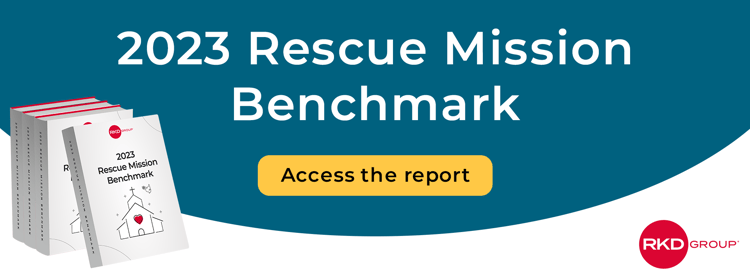Recently, my colleague Glenn McKinney discussed how rescue missions need to rethink their approach to donor journeys to better target their audiences. We’ve been focusing too much on what we can offer donors rather than the relationship we want to build with them.
Today, I’m going to share how you can implement new strategies into your donor journey that better target your active audience by sharing a few of our clients’ success stories.
Segmentation with Denver Rescue Mission
As Glenn mentioned in his blog post, audience planning requires the right technology and infrastructure. Denver Rescue Mission is integrating audience planning into their campaigns with Velocity, our proprietary advanced modeling product.
Through the use of AI, Velocity scores your donor pool to predict which donors are most likely to respond with a gift and which donors will not respond at all. This allows Denver Rescue Mission to conserve funding and resources by targeting donors who are more likely to respond to nonprofit campaigns.
With the money they save in direct mail campaigns, Denver Rescue Mission can invest in boosting other areas of donor retention, like reactivating lapsed donors. They can also test different creative or strategies to reach those donors who score lower and are unlikely to respond to mail cultivation.
Place greater attention on the donors who are actively involved in your organization’s work.
Omnichannel campaigns with Milwaukee Rescue Mission
Milwaukee Rescue Mission has done a great job thinking about what an omnichannel donor journey looks like after the initial gift.
For starters, the organization builds campaigns around stories, not offers. They show the real people in their community whose lives have been transformed.
Milwaukee Rescue Mission also puts stewardship at the forefront of their efforts—thanking donors and showing them how their gift helps.
If someone gives online, for example, they’ll begin a welcome series in email. They’ll also receive a mailed receipt and a phone call. In the months that follow, the donor will see a steady mix of cultivation and stewardship.
Like many programs, a new donor acquired by mail in the fall will see a conversion appeal for a second gift in January. But Milwaukee Rescue Mission’s appeal keeps the focus on showing the impact of their gift—a critical piece for building trust with donors, as we uncovered in our research.
Continued stewardship with City Gospel Mission
City Gospel Mission received a major gift from a donor. Wanting to thank this donor for her incredible gift, they called and sent her notes for over a year and never heard back. The staff at City Gospel Mission were unsure if they should continue reaching out to her, but they persisted in their outreach to craft a meaningful donor experience.
In May, the St. Louis Cardinals baseball team visited Cincinnati to play the Cincinnati Reds. One of the Cardinals' star players often donates to charities wherever he travels and was curious about causes in the Cincinnati area. His wife asked her close friend, whose husband plays for the Reds, for suggestions.
That close friend was the major donor who wasn't responding, but she remembered City Gospel Mission from their continuous outreach to her.
She called City Gospel Mission and arranged a community service project that included both the Cardinals and Reds organizations. Both teams and players gave charitable gifts and thanked City Gospel Mission for their work in the community.
Stewardship and the persistence of creating a meaningful donor journey paid off in the long run.
Whether you plan to focus on audience planning, omnichannel development or stewardship, this audience-first approach to donor journeys allows you to build a sustainable relationship with your donors and target them effectively and efficiently.






Leave a comment: